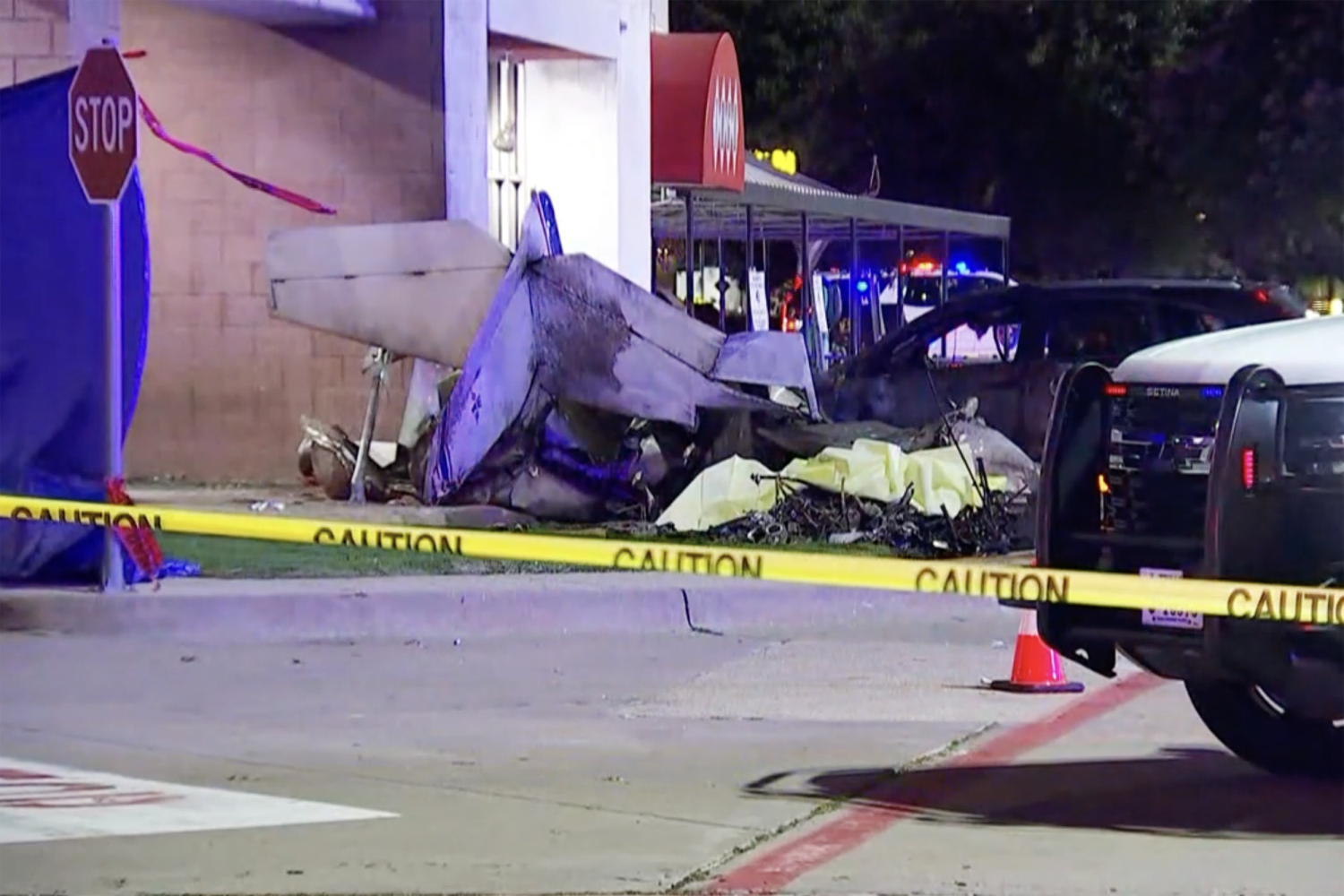On Saturday night, a plane crash occurred in San Bernardino County, California, leaving authorities searching for survivors. Preliminary information from the Federal Aviation Administration (FAA) indicates that the aircraft, a twin-engine Gulfstream AC95, crashed near Palm Avenue and West Verdemont Drive in the Verdemont neighborhood of San Bernardino around 8:15 p.m. Witnesses reported hearing “an engine sputter and then an impact” around the time of the crash, and some also saw a “red light flash” in the area.
First responders began the search for survivors but were hampered by heavy rain and gusty winds. Video from the scene obtained by KTLA shows police tents set up near the scene of the crash. The FAA and the National Transportation Safety Board (NTSB) are investigating the cause of the crash. It is not yet known how many passengers were on board at the time of the crash or if there are any fatalities.The NTSB has a long history of investigating aviation accidents, including a recent incident in Texas. In November 2023, a single-engine plane crashed in a Plano shopping center parking lot, leaving the pilot dead. The National Transportation Safety Board (NTSB) was still investigating the crash at the time, looking at data to determine whether a nearby air strip had anything to do with the accident. The NTSB was also looking for communications between the pilot and air traffic control, as well as any black box or flight data recorder that could have been on board.
In another incident, a helicopter crash in San Bernardino County, California, killed six people, including the CEO of one of the largest banks in Nigeria. Federal investigators are looking at weather conditions, reports of downed power lines near the accident site, and other possible factors that may have caused the crash. The Airbus EC 130 single-engine helicopter crashed near Halloran Springs in the Mojave Desert, about 75 miles northeast of Barstow shortly after 10 p.m. Friday. The charter helicopter had taken off from Palm Springs International Airport at 8:45 p.m. and was bound for Boulder City, Nev.
In the Plano shopping center crash, witnesses described the flames as being so high that they couldn’t make out what was ablaze. The plane did not land on or collide with anything, but the fire did impact an unoccupied parked car. The FAA and NTSB are handling the investigation into the crash.In the Leyden plane crash, the National Transportation Safety Board (NTSB) has released a preliminary report on the crash that killed three people in Leyden. A Beechcraft Baron 95-B-55 (Tail Number N7345R), which is a twin-engine plane, took off from Westfield-Barnes Regional Airport in Westfield at around 11:06 a.m. on Sunday, January 14th with three crew members. The aircraft was in flight heading north-northeast climbing about 3,000 to 3,300 feet mean sea level (msl), and made four alternating 360-degree turns. The plane was flying at 4,000 feet when it suddenly descended and crashed into the ground at 11:25 a.m..
Witnesses described the plane nose-diving and corkscrewing to the ground. Two other witnesses said the engine was really loud and “clunky.” They heard it shut off and then restart right before the crash. At the time, it was windy and cold with a temperature reading 35 degrees at Orange Municipal Airport. An “Airman Meteorological Information” (AIRMET) alert was issued for moderate icing conditions and freezing levels. There was also an alert for severe turbulence between 3,000 and 16,000 feet.
First responders found the plane crash site around 12:30 p.m. with the use of a drone in a small clearing in the woods in the area of the Leyden Wildlife Management Area. Three people were found dead and have been identified as Fredrika Ballard of Southwick and owner of the Fly Lugu Flight School in Westfield, flight instructor William Hampton of Indian Orchard, and student pilot Chad Davidson of Woodstock, Connecticut.The NTSB report indicates that ice had formed on the left engine’s propeller blades and on the navigation antenna. The disposition of the wreckage was consistent with the airplane landing in a relatively flat position with little forward movement. Both wings, along with their respective engines and propeller systems, remained attached to the fuselage. The right wing impacted a tree about mid-span. The tail section was partially separated from the empennage but remained attached via control cables.
The fuselage was compressed and crushed downward. Airframe icing was observed on the leading edge of both wings and horizontal stabilizers, both engine nacelles, and the leading edge of the rudder. Ice was also observed on the front face of one of the left engine’s propeller blades, and on the nav antenna located on the vertical stabilizer.The Federal Aviation Administration (FAA) released its preliminary report on January 16th stating the plane crash has been identified as accidental but the cause of the crash is still unknown. The investigation into the crash is ongoing.
In conclusion, the recent plane crashes in Texas, San Bernardino County, and Leyden highlight the importance of ongoing investigations into the causes of these accidents. Witnesses and investigators are crucial in providing information and insights into the circumstances surrounding these crashes. As the investigations continue, it is essential to consider all possible factors, including weather conditions, air traffic control communications, and aircraft maintenance records, to ensure the safety of future flights.





